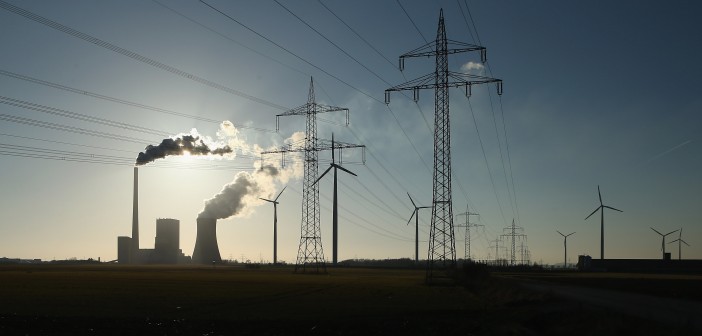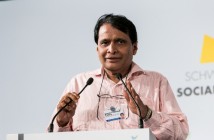The easy availability of electricity is a critical enabler of socio-economic growth in India, writes India Inc. CEO Manoj Ladwa.
The basic building block for sustained economic growth is now in place. From a chronically electricity-deficit country, India has, in a space of three short years, turned the power sector around – so much so, that not only does the country now have surplus power, it is also exporting electricity to neighbouring countries such as Bangladesh, Nepal and Myanmar.
When Prime Minister Narendra Modi appointed Piyush Goyal as Minister of State for Power, Coal, Mines & Renewable Energy (Independent Charge) in 2014, India was reeling under a massive deficit of 87 billion Kwhs or 9 per cent of demand. Result: the economy was suffering long, daily power cuts and the use of diesel generators for back-up that sapped productivity and ate into corporate profitability.
There was little light visible at the end of the tunnel as India’s state-owned power distribution companies, or discoms as they are called, were also bleeding. With cumulative debts of more than $50 billion, they were having to borrow money just to keep their operations running, thus, pushing them further into debt.
This turnaround has made it possible for the Indian government to announce that it would be in a position to fulfil its election promise of providing power for all by next year – a full year ahead of schedule.
This is an incredible achievement. The easy availability of electricity is a critical enabler of socio-economic growth. Being the basic building block of prosperity, power is also the key enabler of several flagship schemes announced by the Prime Minister. There can be no Make in India, Digital India, Start-up India, Skill India or even Swacch Bharat without the provision of adequate electricity.
Prime Minister Narendra Modi’s dream of an educated and empowered nation would also have come to nothing without adequate electricity. Power, as we all know, is sine qua non for children to study, do their homework and prepare for examinations.
The rejuvenation of the power sector will have an impact far beyond the remit of the ministry itself as will help change the lives of millions that currently live, or till recently lived, in darkness.
Power, arguably, is the most critical component of the Prime Minister’s promise of providing jobs for the 10-12 million youth who join the Indian workforce every year. Key to accomplishing this goal is the aim of increasing the share of manufacturing from 18 per cent of GDP at present to 25 per cent of GDP by 2025.
Among several constraints that are holding up the growth of the manufacturing sector was the lack of adequate power to run the machines in thousands of small and medium enterprises that form the backbone of any economy and are the main incubator of the millions of low skilled jobs that really bring prosperity to people at the bottom of the pyramid. I have purposely left out large and heavy industries because they can afford to set up captive power plants or make provisions for back-up power from diesel generators.
But Minister Goyal himself will admit that his job is only half done. Almost a quarter billion Indians still do not have access to electricity in their homes. Turning this situation around and providing power to fuel the expected manufacturing boom in the coming years will consume the current surplus and call for additional sources of electricity.
This is where the Prime Minister’s ambitious target of achieving 175 GW of renewable energy capacity by 2022 will come into play. Achieving this target will not only to enable India to meet its emission goals under the Paris climate accord but also to meet the additional demand that improving economic growth and rising numbers of power consumers will generate.
There will be challenges, for sure. Financing large projects in India remains an issue as the banking sector, which is in the throes of a bad loan crisis, is unable to provide large volumes of credit. Then, the issue of balancing the infirm power that wind and solar plants generate – the potential this has to destabilise the grid – has not yet been resolved.
But neither of these problems is insurmountable and there is every reason to be optimistic that solutions will be found.
This edition of ‘India Investment Journal’ tracks Minister Goyal’s mega power challenge as he travels around the world to scout for investments, besides the usual cross-sector coverage.







